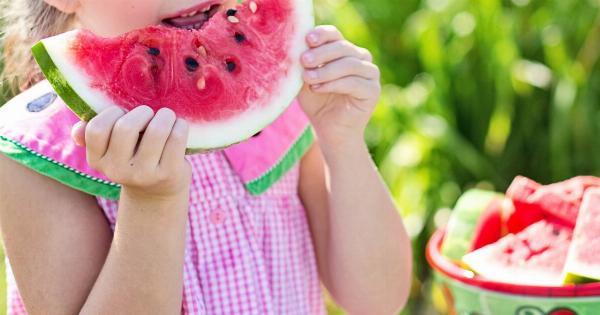Proper nutrition is essential for the overall growth and development of children. It plays a crucial role in supporting their physical, mental, and emotional well-being.
Teaching children about nutrition and healthy eating habits from a young age not only helps them make better food choices but also establishes a foundation for a lifetime of wellness. In this article, we present Nutrition 101 – a fun and interactive guide that uses each letter of the alphabet to introduce children to various aspects of nutrition and healthy eating habits.
A – Antioxidants
Antioxidants are nutrients that help protect our body from damage caused by harmful molecules called free radicals. Foods rich in antioxidants include berries, grapes, spinach, and nuts.
Encourage children to eat these foods to keep their bodies strong and healthy!.
B – Balanced Diet
A balanced diet includes foods from all the different food groups, such as fruits, vegetables, grains, proteins, and dairy. Eating a variety of foods helps children get all the essential nutrients they need for growth and energy.
C – Calcium
Calcium is vital for building strong bones and teeth. It can be found in dairy products like milk, cheese, and yogurt. Encourage children to consume these calcium-rich foods to ensure healthy bone development.
D – Digestion
Digestion is the process by which our body breaks down food into smaller pieces and absorbs the nutrients. Teach children the importance of chewing their food properly and eating slowly. This helps in better digestion and nutrient absorption.
E – Exercise
Exercise is an important part of a healthy lifestyle. It helps strengthen muscles, improve heart health, and maintain a healthy weight.
Encourage children to engage in physical activities they enjoy, such as playing sports, riding their bikes, or dancing.
F – Fiber
Fiber is a type of carbohydrate that our body cannot digest. It helps in regulating bowel movements, maintaining a healthy weight, and reducing the risk of diseases like diabetes and heart disease.
Teach children to include fiber-rich foods like fruits, vegetables, and whole grains in their diet.
G – Good Fats
Not all fats are bad! Good fats, like those found in avocados, nuts, and olive oil, are important for brain development and overall health.
Teach children about the difference between healthy fats and unhealthy fats and encourage them to make smart choices.
H – Hydration
Drinking enough water is essential for staying hydrated. Encourage children to drink plenty of water throughout the day, especially during physical activities. Water helps maintain body temperature, transport nutrients, and remove waste.
I – Iron
Iron is a mineral that helps our body make red blood cells, which carry oxygen to all parts of the body. Iron-rich foods include lean meats, beans, nuts, and dark leafy greens.
Explain the importance of iron to children and encourage them to include these foods in their meals.
J – Junk Food
Junk food is high in unhealthy fats, sugar, and salt, and lacks essential nutrients. It can be fun to enjoy these foods occasionally, but teach children about the importance of moderation and making healthier choices most of the time.
K – Vitamins and Minerals
Vitamins and minerals are nutrients that our body needs in small amounts to function properly. Teach children about different vitamins such as vitamin A, B, C, and minerals like calcium, iron, and zinc.
Explain how eating a variety of foods helps ensure they get all the necessary vitamins and minerals.
L – Labels
Teach children to read food labels to understand what they’re eating. Help them identify unhealthy ingredients like added sugars and unhealthy fats. Encourage them to choose foods with lower amounts of these ingredients for better nutrition.
M – Moderation
Teach children the importance of moderation in their eating habits. Help them understand that it’s okay to enjoy their favorite treats occasionally, but they should also make healthy choices most of the time.
N – Nutrients
Nutrients are the substances found in food that are essential for growth, energy, and overall health. Teach children about different nutrients like carbohydrates, proteins, fats, vitamins, and minerals, and how each plays a unique role in their body.
O – Organic Foods
Organic foods are produced without the use of synthetic chemicals like pesticides and artificial fertilizers.
Teach children about the benefits of choosing organic foods whenever possible, as they tend to have fewer harmful substances and may be better for the environment.
P – Portion Control
Teach children about portion control to help them understand the right amount of food they should eat. Use visual aids like comparing their portion sizes to everyday objects, like a deck of cards or a tennis ball.
Conclusion
Introducing children to the fundamentals of nutrition and healthy eating habits at a young age is crucial for their long-term well-being. The Nutrition 101 guide presented here uses the alphabet to make learning about nutrition fun and interactive.
By teaching them about antioxidants, balanced diets, calcium, digestion, exercise, fiber, good fats, hydration, iron, junk food, vitamins, minerals, reading labels, moderation, nutrients, organic foods, and portion control, we equip children with the knowledge they need to make smart food choices and live healthy, happy lives.






























